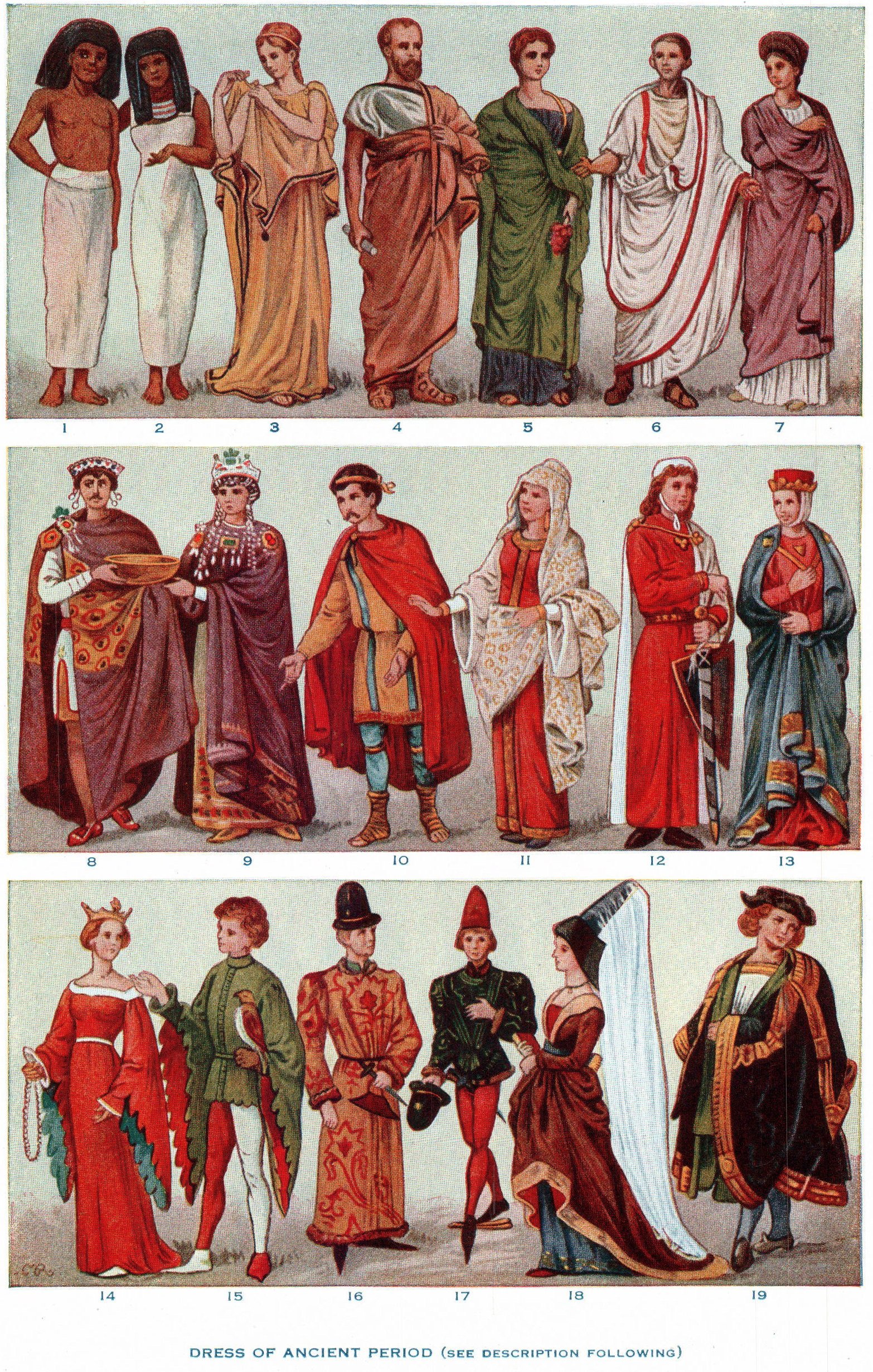
Clothing
Clothing (also known as clothes, garments, dress, apparel, or attire) is any item worn on the body. Typically, clothing is made of fabrics or textiles, but over time it has included garments made from animal skin and other thin sheets of materials and natural products found in the environment, put together. The wearing of clothing is mostly restricted to human beings and is a feature of all human societies. The amount and type of clothing worn depends on gender, body type, social factors, and geographic considerations. Garments cover the body, footwear covers the feet, gloves cover the hands, while hats and headgear cover the head, and underwear covers the private parts.
"Outfit" redirects here. For other uses, see Outfit (disambiguation). "Garment" redirects here. For other uses, see Garment (disambiguation). "Clothes" redirects here. For the films, see Clothes (1914 film) and Clothes (1920 film).
Clothing serves many purposes: it can serve as protection from the elements, rough surfaces, sharp stones, rash-causing plants, and insect bites, by providing a barrier between the skin and the environment. Clothing can insulate against cold or hot conditions, and it can provide a hygienic barrier, keeping infectious and toxic materials away from the body. It can protect feet from injury and discomfort or facilitate navigation in varied environments. Clothing also provides protection from ultraviolet radiation. It may be used to prevent glare or increase visual acuity in harsh environments, such as brimmed hats. Clothing is used for protection against injury in specific tasks and occupations, sports, and warfare. Fashioned with pockets, belts, or loops, clothing may provide a means to carry things while freeing the hands.
Clothing has significant social factors as well. Wearing clothes is a variable social norm. It may connote modesty. Being deprived of clothing in front of others may be embarrassing. In many parts of the world, not wearing clothes in public so that genitals, breast, or buttocks are visible could be considered indecent exposure. Pubic area or genital coverage is the most frequently encountered minimum found cross-culturally and regardless of climate, implying social convention as the basis of customs. Clothing also may be used to communicate social status, wealth, group identity, and individualism.
Some forms of personal protective equipment amount to clothing, such as coveralls, chaps or a doctor's white coat, with similar requirements for maintenance and cleaning as other textiles (boxing gloves function both as protective equipment and as a sparring weapon, so the equipment aspect rises above the glove aspect). More specialized forms of protective equipment, such as face shields are classified as protective accessories. At the far extreme, self-enclosing diving suits or space suits are form-fitting body covers, and amount to a form of dress, without being clothing per se, while containing enough high technology to amount to more of a tool than a garment. This line will continue to blur as wearable technology embeds assistive devices directly into the fabric itself; the enabling innovations are ultra low power consumption and flexible electronic substrates.
Clothing also hybridizes into a personal transportation system (ice skates, roller skates, cargo pants, other outdoor survival gear, one-man band) or concealment system (stage magicians, hidden linings or pockets in tradecraft, integrated holsters for concealed carry, merchandise-laden trench coats on the black market — where the purpose of the clothing often carries over into disguise). A mode of dress fit to purpose, whether stylistic or functional, is known as an outfit or ensemble.
Life cycle[edit]
Clothing maintenance[edit]
Clothing suffers assault both from within and without. The human body sheds skin cells and body oils, and it exudes sweat, urine, and feces that may soil clothing. From the outside, sun damage, moisture, abrasion, and dirt assault garments. Fleas and lice can hide in seams. If not cleaned and refurbished, clothing becomes worn and loses its aesthetics and functionality (as when buttons fall off, seams come undone, fabrics thin or tear, and zippers fail).
Often, people wear an item of clothing until it falls apart. Some materials present problems. Cleaning leather is difficult, and bark cloth (tapa) cannot be washed without dissolving it. Owners may patch tears and rips, and brush off surface dirt, but materials such as these inevitably age.
Most clothing consists of cloth, however, and most cloth can be laundered and mended (patching, darning, but compare felt).
Global trade[edit]
EU member states imported €166 billion of clothes in 2018; 51% came from outside the EU (€84 billion).[67][68] EU member states exported €116 billion of clothes in 2018, including 77% to other EU member states.[69][70]
According to the World Trade Organization (WTO) report, the value of global clothing exports in 2022 reached 790.1 billion USD, up 10.6% from 2021. China is the world's largest clothing exporter, with a value of 178.4 billion USD, accounting for 22.6% of the global market share. Next are Bangladesh (40.8 billion USD), Vietnam (39.8 billion USD), India (36.1 billion USD), and Turkey (29.7 billion USD).
In Vietnam, clothing exports continue to be one of the leading export sectors, contributing significantly to the export turnover and economic growth of the country.[71][72] According to the General Department of Customs of Vietnam, the value of Vietnam's clothing exports in 2022 reached 39.8 billion USD, up 14.2% from 2021.[73][74] Of which, clothing exports to the United States reached 18.8 billion USD,[75][76] accounting for 47.3% of the market share; exports to the EU reached 9.8 billion USD, accounting for 24.6% of the market share.[77]



